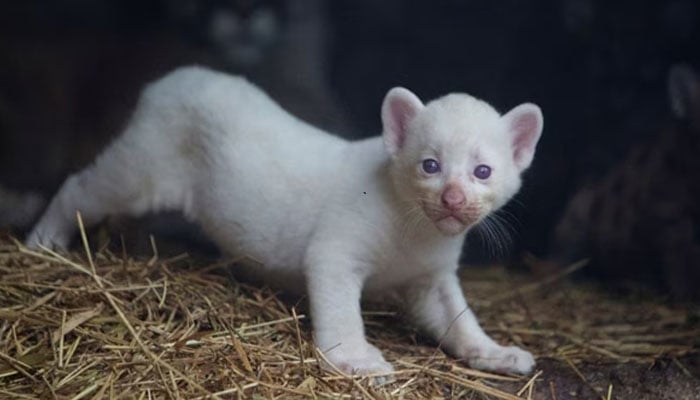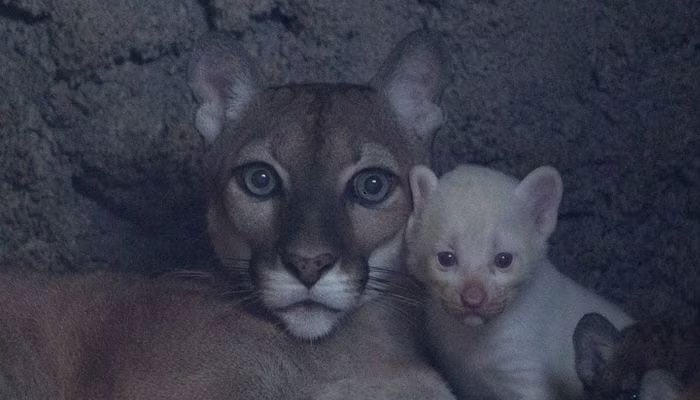Nicaragua's Thomas Belt Zoo welcomes one of a kind albino puma
The albino puma cub is one of only four of its kind in the world
August 23, 2023

In a rare and momentous event at Nicaragua's Thomas Belt Zoo, a puma has given birth to a unique albino cub — one of only four of its kind in the world.
With caution in her eyes and sharp ears, the mother puma oversees its one-month-old babies.
The birth of the cub has great significance for Nicaragua, introducing its inaugural captive-born albino puma.
The rareness of this occurrence is underlined by Carlos Molina, the zoo's veterinarian, who believes there are only four such albino pumas in existence across the world.

Despite the cub's current vitality and robust appetite, Molina warns regarding this pivotal phase, emphasising the optimal care that albino pumas demand due to their heightened sensitivity to sunlight.
To ensure the safety and stability of the cub and its two fellow siblings, the trio lives within an enclosed habitat.
This deliberate measure prevents the mother from undergoing distress or misconstruing human scents for those of her newborns, a scenario that might inadvertently trigger aggressive behaviour.
Moreover, the male parent is kept separately, due to the known tendency of male pumas to pose a threat to their young. The genders of the litter remain undisclosed, and the veterinarian refrains from direct physical interaction.
As these feline wonders near the three-month threshold, the zoo plans to introduce them to the public. Thomas Belt Zoo, under conscientious management, typically attracts an annual attendance of 50,000 to 60,000 visitors.
Pumas, found in the Americas, spanning from the lofty Andean reaches of southern Peru to the vibrant jungles of Central America, are lauded by the International Union for Conservation of Nature for their extensive territorial reach among land mammals in the Western Hemisphere.
Nevertheless, their presence waned in the eastern half of North America following the period of European colonisation.











